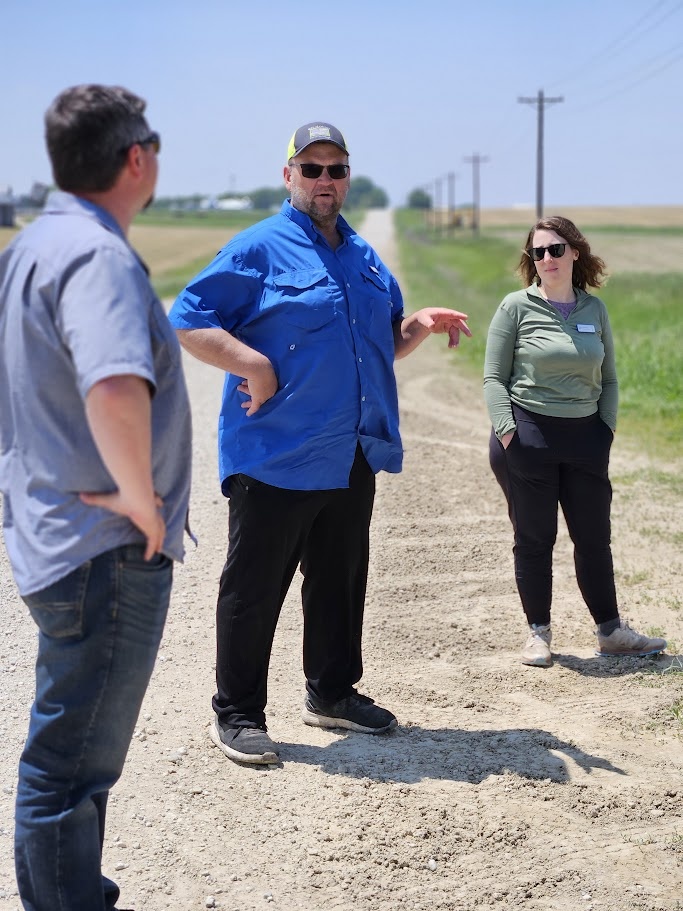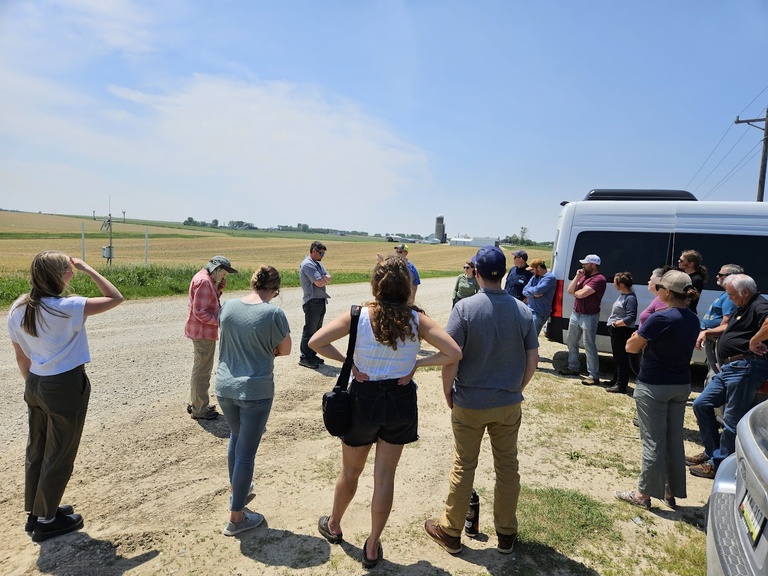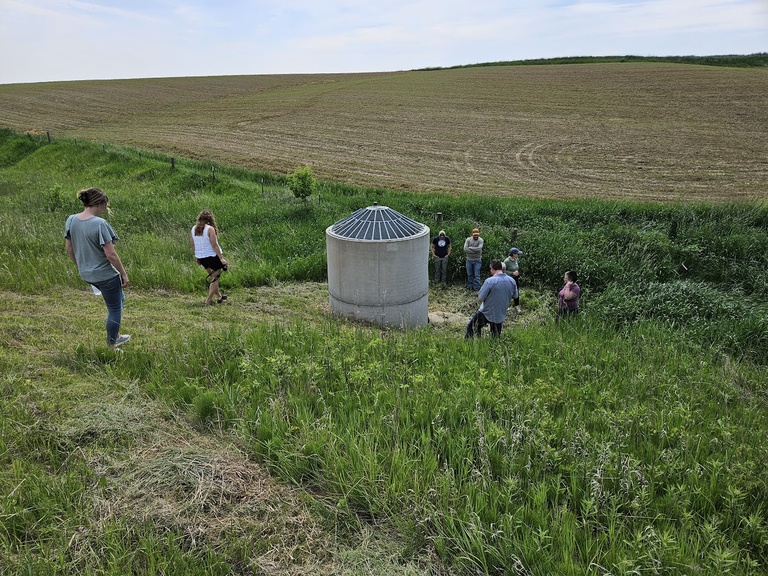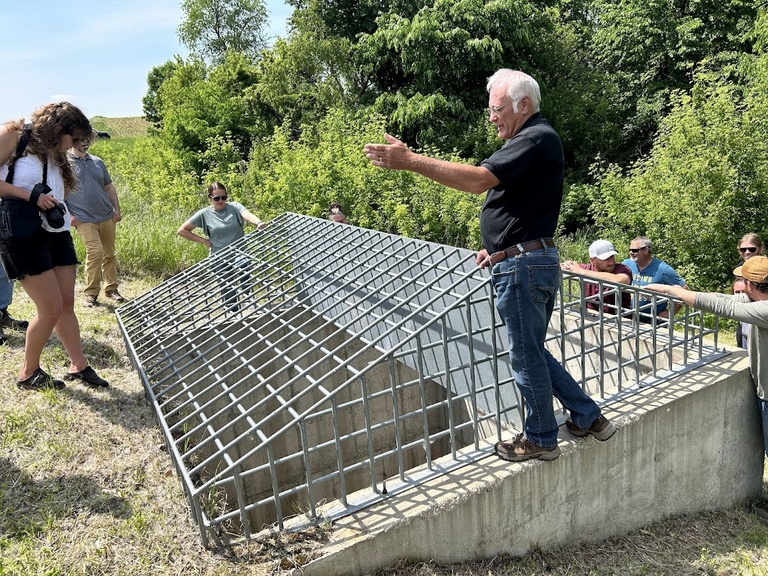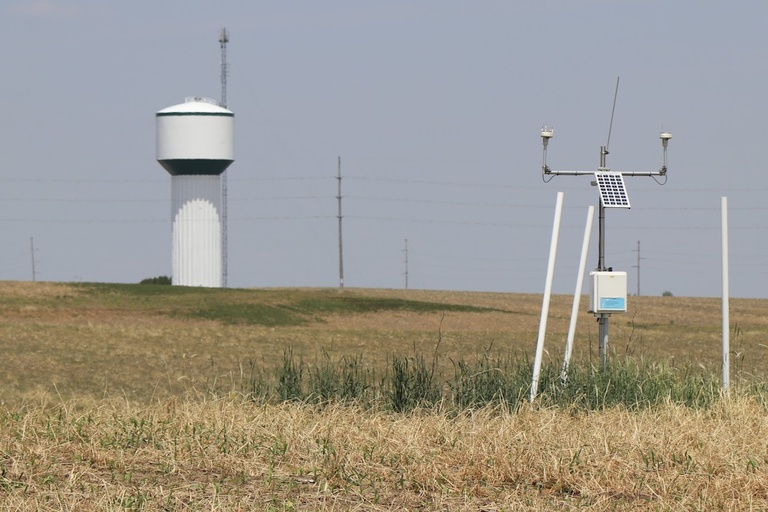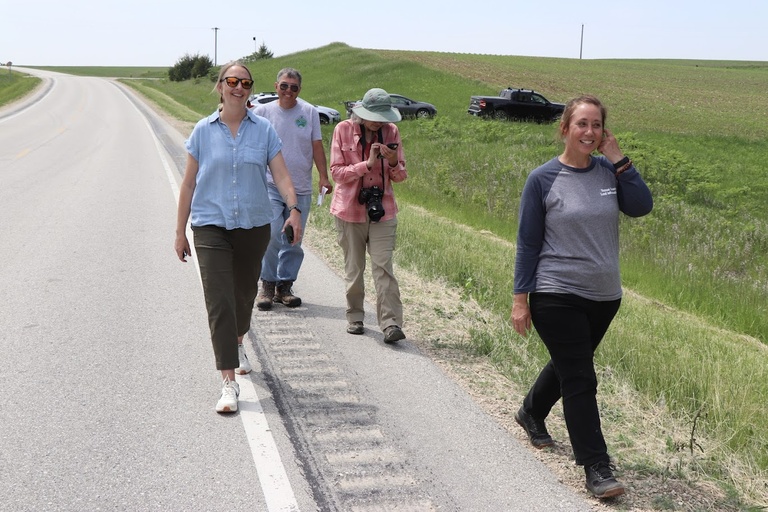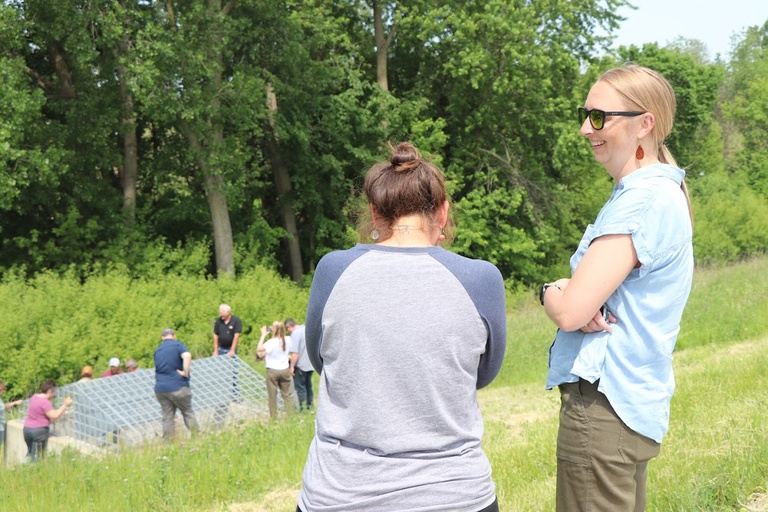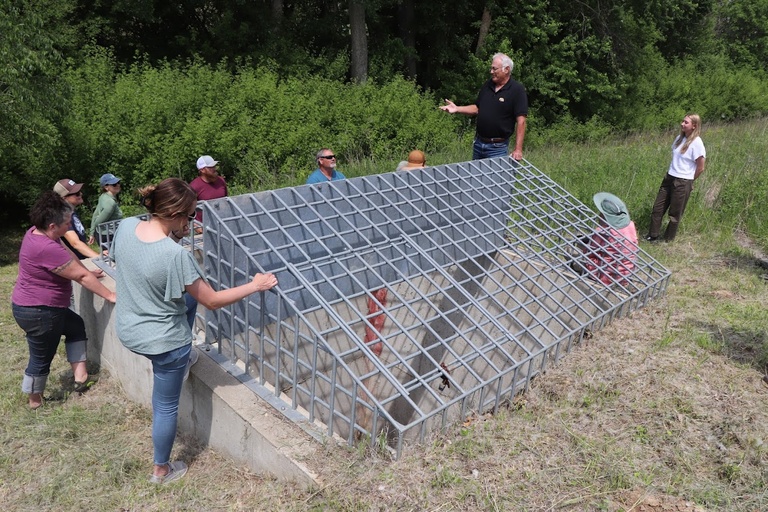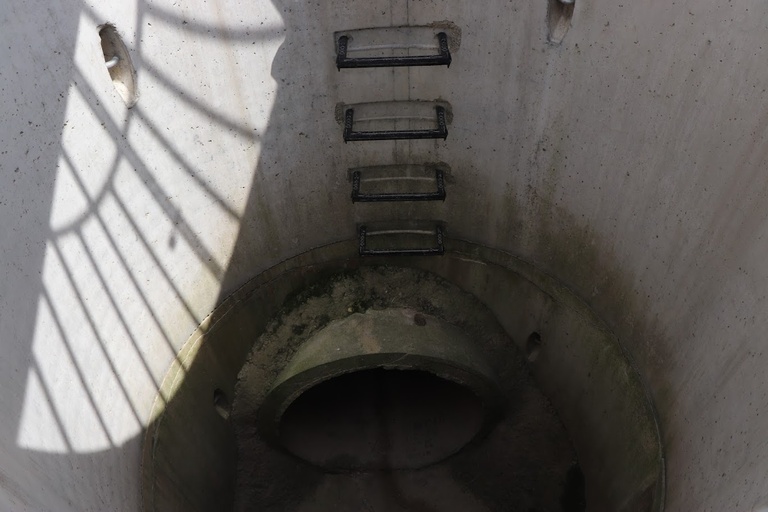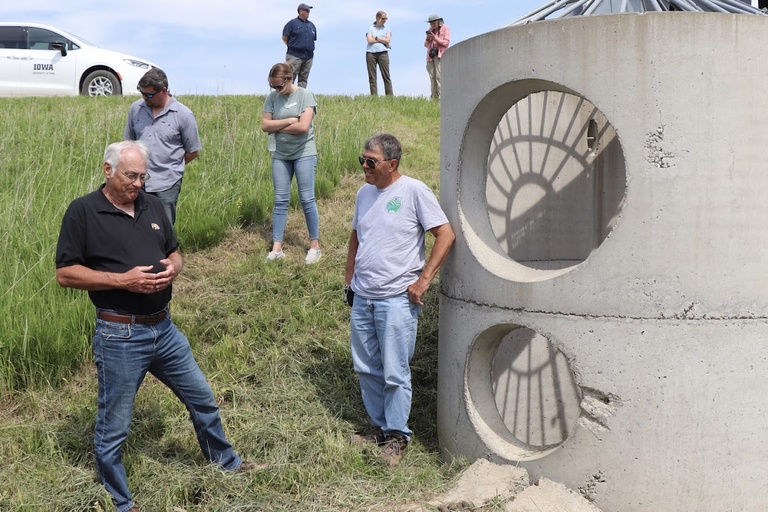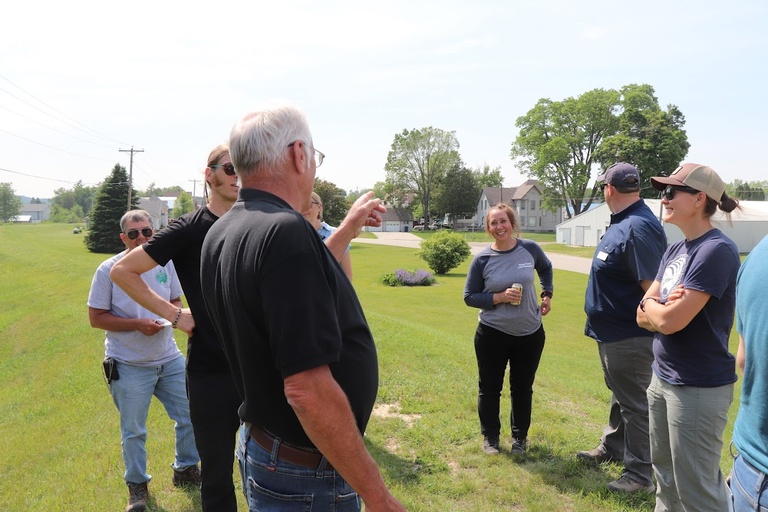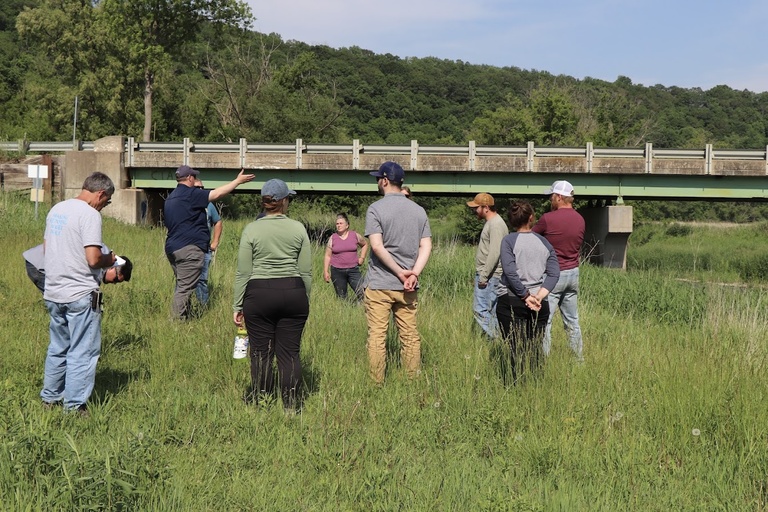A group of passionate watershed conservationists, engineers, farmers, and community members from Iowa and Wisconsin connected in Postville, Iowa for an informational exchange around innovative watershed management strategies.
Watershed professionals from Northeast Iowa Resource Conservation and Development (RC&D), Iowa Flood Center (IFC), Coon Creek Community Watershed Council (CCCWC), River Alliance of Wisconsin, Wisconsin Wetlands Association, Monroe and Vernon County Land Conservation Department, and Trout Unlimited came together to share ideas focusing on public engagement to enhance watershed protection and land stewardship.
“If you don't believe or know you live in a watershed, it's hard to care about it and protect it," said Ross Evelsizer, RC&D natural resources project director. “Watershed awareness is an important step towards stewardship — if people don’t understand that they’re part of a watershed system, they’re less likely to understand how their actions impact water quality and quantity downstream.”
The group toured several sites in Postville, West Union, Elgin, and surrounding areas. Highlights included on-road structures pioneered in northeast Iowa, real-time stream sensors from the IFC's network, relay cropping at FLOLO Farms to boost soil health and reduce flooding, and a stream bank stabilization along the Yellow River. Each site sparked engaging discussions about the conservation value on the watershed and surrounding community.
Loran Steinlage, FLOLO Farms owner and operator, helped break down barriers on regenerative agricultural practices in the field. Steinlage, a major figure in the farming world, is nationally recognized for his leadership in regenerative and organic agriculture. Cover crops and relay crops protect the soil, ensuring that topsoil is not blown off the field while also promoting better water infiltration and less runoff. The IFC’s state-of-the-art hydrostation deployed on the farm helps to monitor hydrologic conditions and understand the potential flood reduction benefits of such practices to explore how it can be scaled up and more easily adopted in other areas.
Two on-road structure (ORS) stops gave the group a chance to compare different designs and scales of these projects. Unlike traditional culverts, ORS help to temporarily hold back water instead of quickly pushing it downstream. The practice resonated with the group of collaborators, especially the CCCWC whose activities are guided by “learning to make running water walk.” The slogan was coined by Ernest Haugen, an early adaptor and major contributor to soil conservation practices in the Coon Creek Watershed. Conversations emphasized how traditional methods of moving water could slowly be replaced with ORS in the communities represented.
“These physical interventions are only part of the picture,” said Sidney Widell with the CCCWC. “They need to work in tandem with other initiatives, like the Iowa Flood Center's sophisticated network of flood gauges that alert residents when floods happen, programs that address systemic barriers to changes in land management practices, and proactive local policies that prioritize flood resilience.” Participants left with new ideas to explore how Iowa’s approach could be modeled in the Coon Creek Watershed. The group expects to stay connected, and plans are underway for a return Iowa-to-Wisconsin exchange later this year.

